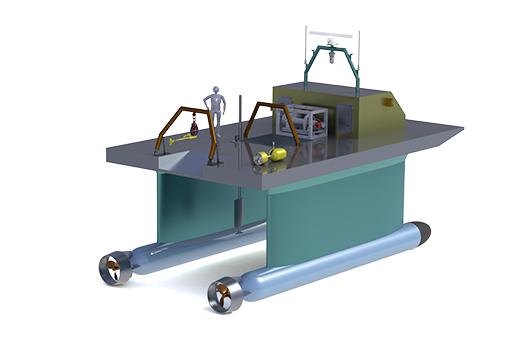Autonomous Marine Vehicle for the National Oceanic and Atmospheric Administration

During the execution of this contract, Tridentis AMV performed a “clean sheet” design of an autonomous mobile surface coastal monitor that uses “green” power sources, has modular capability to allow for “plug and play” of new sensors and technology, and provides calibration/validation for NOAA and other optical satellite sensors. Tridentis AMV designed a highly efficient, stable platform that makes the use of “green” power for propulsion and systems power, making it attractive for unmanned surface vessel (USV) operations. This is significant, because green energy sources are typically not as energy dense as fossil fuels, which can hamper the design process.
This platform was designed around one or more modular sensor bays to support the employment of a multitude of sensors as needed by NOAA’s five line offices. The modular sensor bay was designed to be easily serviceable, with standardized interfaces where possible. By approaching this requirement with a clean sheet design, we enhanced the power, efficiency, and utility of the platform that would otherwise have been an add-on to an existing vessel. The platform itself is a custom design developed to support the coastal sensing mission for NOAA, but it is flexible enough to allow for almost any sensor to be easily retrofitted, and it will employ sensors for atmospheric, sea/air interface, and subsurface parameters.
The design that will come out of this Phase I SBIR will have multiple applications beneficial to numerous agencies outside of NOAA, including the United States Navy and United States Coast Guard.
